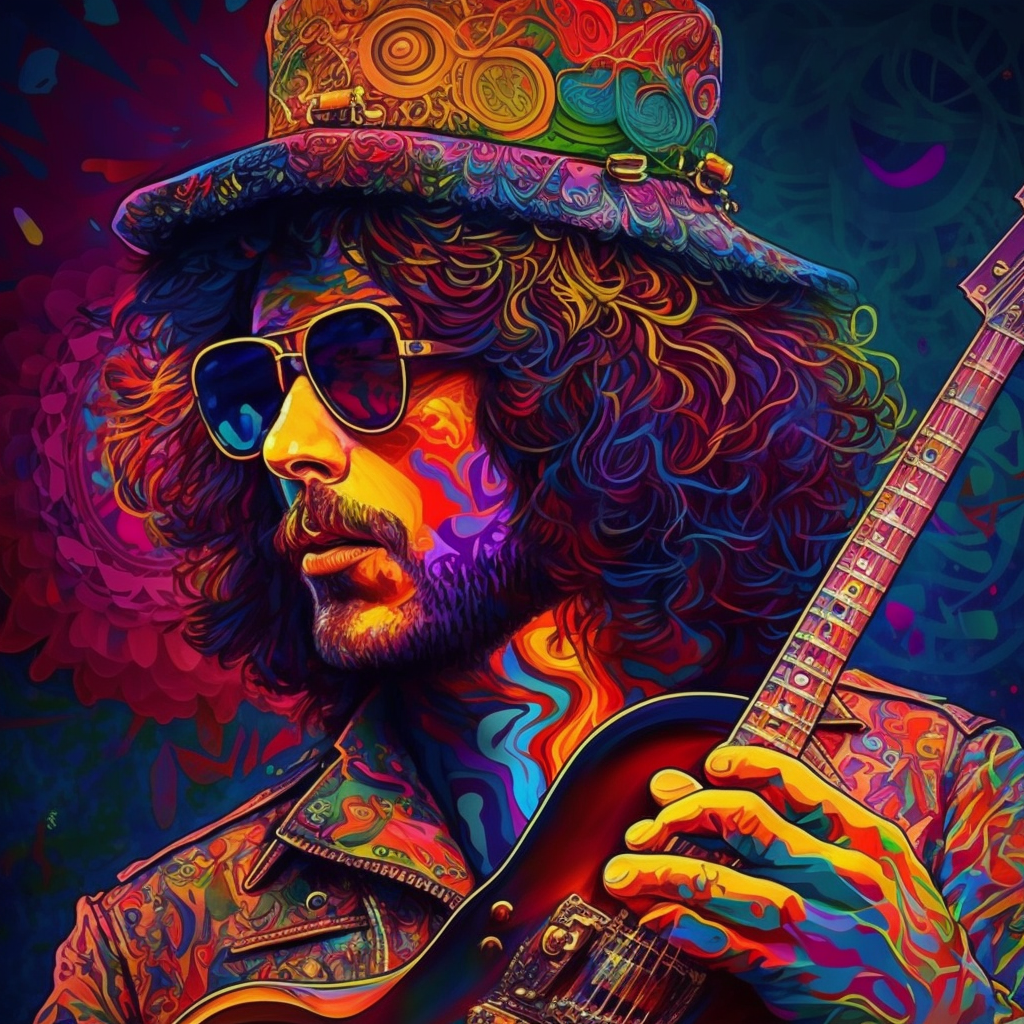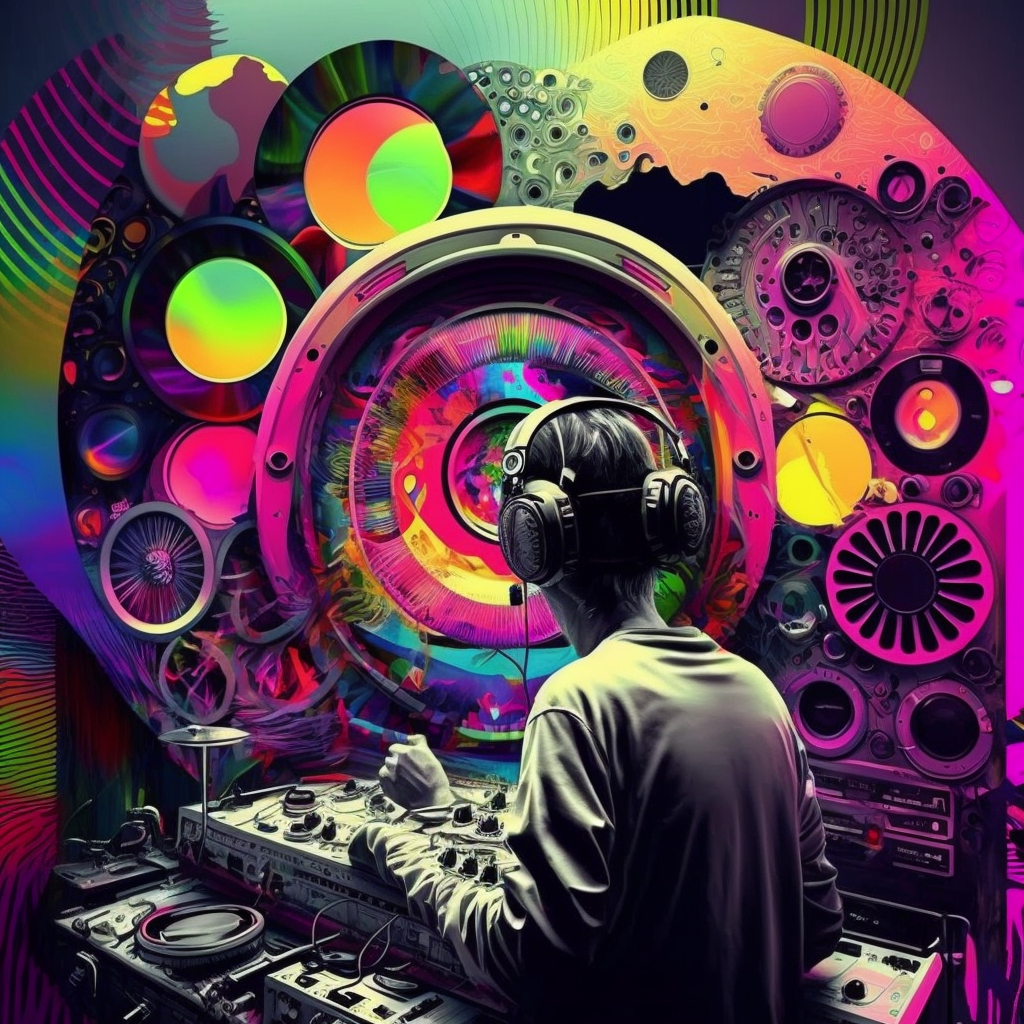
 History Of Psychedelic Music
History Of Psychedelic Music
Trip Through Sounds, History & The People Behind Psychedelic Music
Are you ready to explore the mind-bending world of psychedelic music? The human mind is a mysterious and expansive property that still holds many secrets. It’s the key to experiencing all the things we hold dear in life, including art. Without the mind and soul, the emotions and wonder we feel when experiencing art, such as the grandeur of the David or the sensuality of the Mona Lisa, would be unknowable phenomena.
But what if music could take us even deeper into the recesses of the mind, to places where questions of existence, consciousness, ego, and transcendence combine? This is where the phenomenon of psychedelic music comes in. It’s a musical experience that can transport us to a whole new level of consciousness.
The history of psychedelic music is a kaleidoscopic journey that spans decades and has origins far beyond the late 1960s. But first, let’s explore the meaning behind the term “psychedelic.” Coined by English psychologist Humphrey Osman in 1956, it’s a portmanteau of two Greek words: psyche, meaning mind, soul, and self, and delaying, meaning to manifest. The word was created during conversations Osman had with “Brave New World” author, Alice Huxley, about the peculiar experience of ingesting LSD.
Now, let’s dive into the fascinating history of psychedelic music. From its origins in the 1950s to the revolutionary sounds of the 1960s and beyond, we’ll explore the diverse range of artists, styles, and influences that have shaped this musical phenomenon. Get ready to expand your mind and open your ears to the incredible world of psychedelic music.
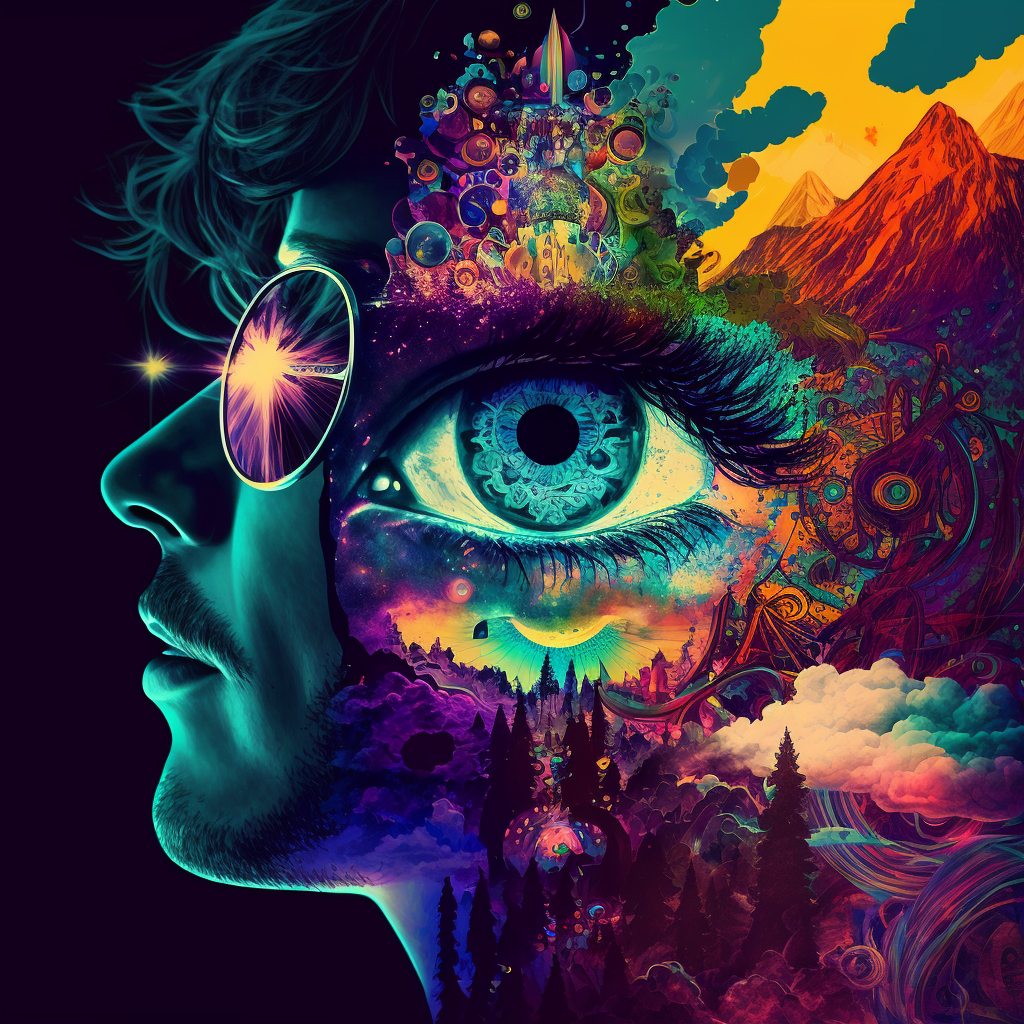
Philosophy And Psychedelic Music History
The term “psychedelic music” is commonly used to refer to music that enhances sensory experiences or induces mind expansion, often under the influence of hallucinogens. Although the word “psychedelic” was coined in 1956, such mind-altering forms of music existed before then. The origin of psychedelic music is a debated topic, with some pointing to Hector Berlioz’s 1830 composition “Symphony Fantastique,” which depicts an opium-induced nightmare of lost love and desire using the orchestra. Others trace it back to the Middle Ages, citing the morality plays of Hildegard von Bingen as an early example of music and mind imagery blending together.
However, the definitive point where music took on not just a programmatic nature but a mind-expanding one was with the premiere of Claude Debussy’s “Prelude to the Afternoon of a Faun” in 1894. To understand Debussy’s music, it is important to consider two artistic movements that were happening in the late 19th century.
Impressionism and Symbolism were two artistic movements that influenced the music of Claude Debussy. The term “impressionism” is still controversial when applied to Debussy’s music, but “symbolism” more accurately describes pieces like “Prelude to the Afternoon of a Faun” or “La Mer.”
Impressionism was a reactionary movement against the conservative-minded Parisian visual arts community under Emperor Napoleon III. Impressionist painters used abstract brushstrokes to capture real life in a hazy, yet beautiful sense that only existed in the blurred memories and emotions of human society.
Debussy himself claimed that he had nothing to do with the impressionist movement. However, his music shares some of the movement’s key characteristics, such as a focus on mood, color, and texture, and a rejection of traditional forms and structures. Symbolism, on the other hand, emphasized the use of symbols and metaphors to express emotions and ideas, which can be heard in the evocative imagery of Debussy’s music.
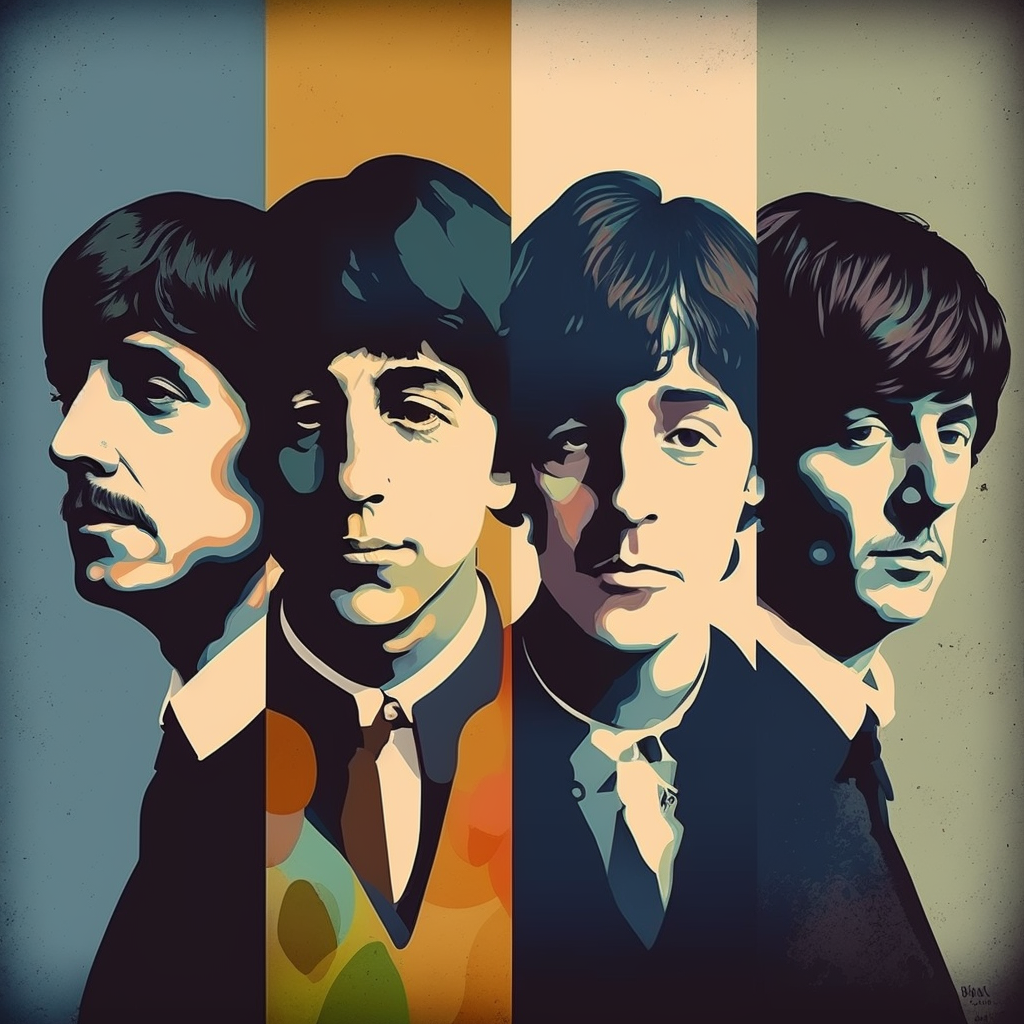
Key Characters
Critics have attempted to attach the label of “impressionism” to Debussy’s music ever since he appeared on the music scene in the 1890s. This is due to the dreamlike, abstract, and mind-expanding qualities of his music. However, Debussy and subsequent critics rejected this association with the impressionist movement. Instead, it is more pertinent to consider the symbolist movement, with which Debussy had much more apparent ties.
Although Debussy never referred to himself as a symbolist, it is well known that a series of symbolist writings inspired his work, including “Prelude to the Afternoon of a Faun” and his lone opera “Peleas et Melisande.”
Symbolism, according to Jean Moréas, a famous symbolist writer, involves the representation of nature, human activities, and all real-life events as veiled reflections of the senses, pointing to archetypal meanings through their esoteric connections. This art movement seeks to convey the essence of things rather than their literal depiction, which is evident in the evocative and suggestive qualities of Debussy’s music.
In Jean Moréas’ declaration, we see an outline for a philosophical approach to art that is far more in line with Debussy’s evocation of dream-like states, abstract emotions, and unknowable knowledge. This is why the history of psychedelic music starts with Debussy.
Specifically, what makes “Prelude to the Afternoon of a Faun” so psychedelic? Let’s take a brief look at the piece. When we dive into the music, we see quite a few similarities between Debussy and a band like The Doors. The piece contains multiple odd meters, Eastern musical influences, and a loose, if not non-existent, structure to further the symbolist psychedelic experience of a fawn luxuriating on a sunny afternoon.
As the piece unfolds, it becomes more and more abstract until finally ending in a calm yet elated state. While audiences at the time might not have realized it, “Prelude to the Afternoon of a Faun” was a definitive move away from simply programmatic music to inner emotional, mind-expanding music.
While the psychedelic values that Debussy pioneered faded into the background of orchestral music in favor of various different strains of composing in the early 20th century, these ideas and themes found a new home in the burgeoning electronic music composition scene. Nowhere was this more obvious than in the movement of the Italian Futurists.
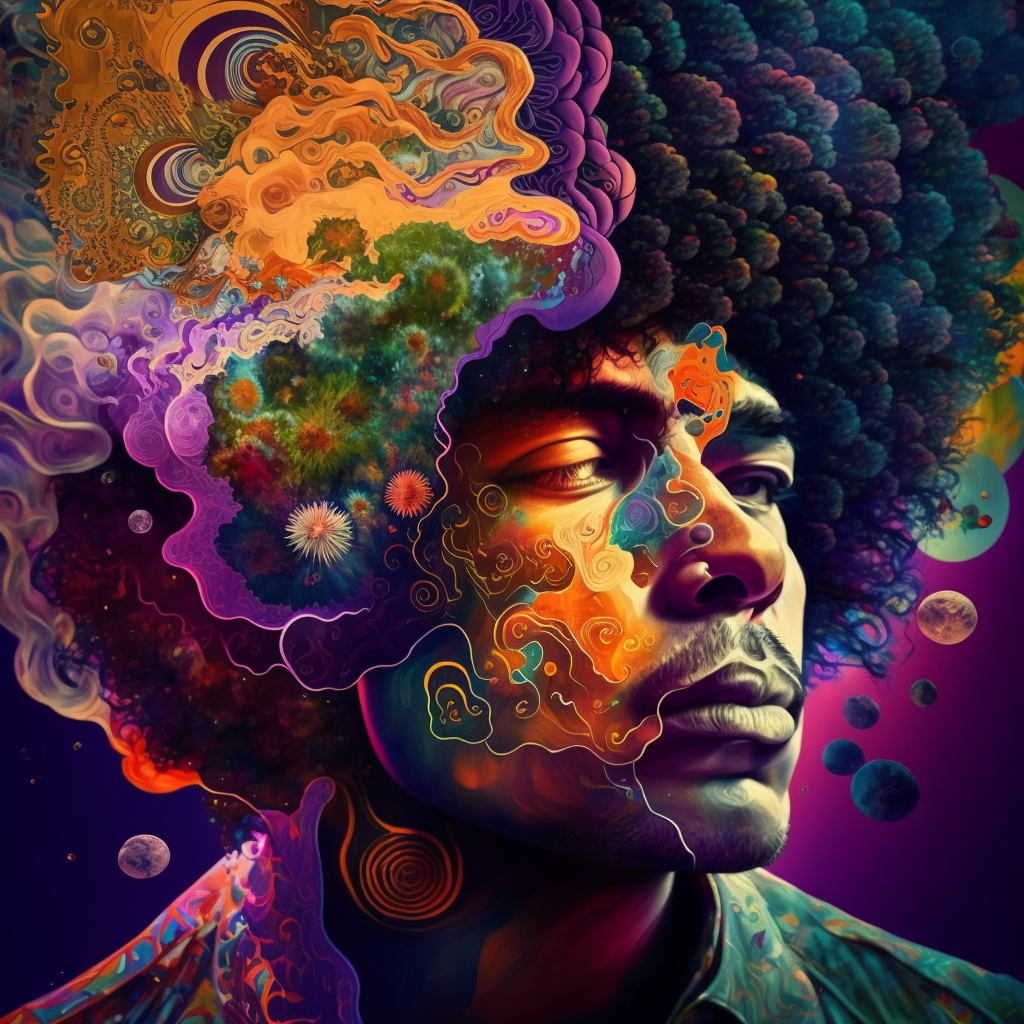
Moving With Electric And Pulse
At first glance, the Italian Futurists may seem disconnected from the sublime aesthetics of the Symbolists and composers like Debussy. Their music was often jarring, nonsensical, and unsettling – an art of the body and exterior rather than the inner. However, their radical departure from traditional instrumentation and innovation of electronic composition ultimately laid the foundation for the sonic textures of modern psychedelia.
In Luigi Russolo’s 1913 treatise, “The Art of Noises,” he describes the evolution of sound, including the distinctive phenomena of noise, and how it emerged as a result of the unique circumstances of industrial revolution-era Europe. The sounds of machines clanging, steam engines exhaling, and the development of voltage-controlled sound – according to Russolo – were ripe for artistic exploitation, particularly in sound and music.
For Russolo, in order for music to remain relevant and relatable to the current state of humanity, composers needed to incorporate these concepts into modern composition. While seemingly disparate from the Symbolist movement and Debussy’s music, the Italian Futurists ultimately helped shape the evolution of psychedelic music, demonstrating that innovation in music is not limited to the realm of the inner emotional experience but can also be found in the exploration of new sounds and technologies.
The futurists, at first glance, may seem disconnected from the sublime aesthetics of the symbolists and composers like Debussy. Their music was jarring, nonsensical, and often unsettling – very much a music of the body and the exterior rather than the inner world. But despite its exteriority and physicality, futurism’s radical departure from traditional instrumentation and its innovation of electronic composition provided the building blocks of the sonic textures of modern psychedelia.
Luigi Russolo, an Italian futurist, described in his 1913 treatise “The Art of Noises” the evolution of sound and the distinctive phenomena known as “noise” and how it came to be a result of the unique circumstances of the industrial revolution-era Europe. According to Russolo, the sounds of machines, steam engines, voltage-controlled sound, and other noises were ripe for artistic exploitation, particularly in the field of sound or music. He believed that incorporating these concepts into modern composition was crucial for music to remain relatable to the current state of humanity.
The futurists were musical forerunners of modern psychedelia by creating within these frameworks. However, it was the successor movement to the futurists that shook things up: music concrete. There were a number of renowned music concrete composers, including Pierre Schaeffer and Iannis Xenakis, but Edgard Varèse did more to advance the principles of pre-60s psychedelia than any other composer. He brought the purely physical and carnal influence of the futurists back under control and used it to explore the astral realm.
Varèse was born in France in 1883 and later immigrated to the United States, where he composed his most influential work. Coming from both a musical and scientific background, Varèse started in the traditional classical sphere before moving towards electronic composition, tape loops, and the general trappings of what was to become music concrete. His innovations in these fields, particularly in a piece like “Poème électronique,” were incalculably important to the development of later psychedelic music.
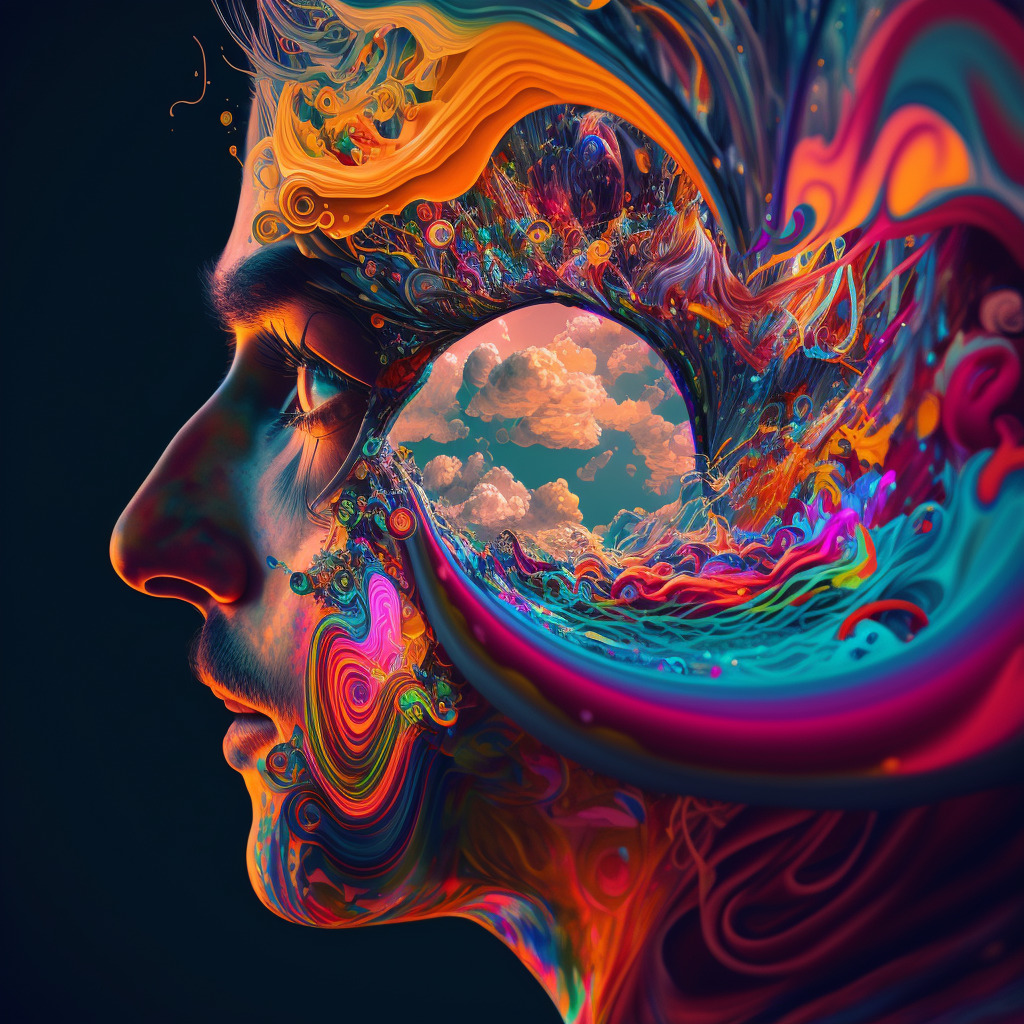
Psychedelic Rock Music As A Step Foreword
As the initial waves of swing music and early rock and roll began to peter out, the history of Western music entered a period known as the space age era. While the late 60s psychedelic era is often associated with terms like “wild west” and “trippy,” the space age era was a more cohesive scene that featured various styles of music, including tiki or exotica music, avant-garde electronic guitar pop like that of Joe Meek and the Tornadoes, and the wild stereophonic Latin ensemble experiments of someone like Esquivel.
Despite being a trippy time in music, the space age era flew under the radar due to its target audience of mainstream suburban America. Nonetheless, it was a time of reintroducing the initial influence of Debussy and taking the electronic innovations of the futurists and music concretis to dizzying new heights. The addition of the stereophonic recording innovations of Esquivel created by far the trippiest, most spaced-out form of music that anyone had heard up until that point.
However, due to the nature of post-World War II America and the West’s general conservative nature, the concepts espoused in these mostly instrumental records were nothing that would cause anyone to question anything.
In the late 1960s, music underwent a radical transformation that mirrored the shifting political and social landscape of the time. The music of the psychedelic era, which is often characterized as being wild and trippy, was reflective of the counterculture movement that was sweeping across the United States and beyond. This movement was fueled by a desire to break free from the constraints of mainstream society and explore new ways of living, thinking, and expressing oneself.
At the forefront of this musical revolution were bands like The Beatles, The Rolling Stones, and Jimi Hendrix. Their music was characterized by psychedelic rock and lyrics that reflected the mood of the times. However, what is often overlooked is the fact that the psychedelic era also gave rise to a parallel movement in soul and folk music.
In the soul music scene, artists like James Brown, Aretha Franklin, and Sly and the Family Stone were infusing their music with elements of psychedelia. Their music reflected the political and social upheavals of the time, and many of their songs became anthems for the civil rights movement. In the folk music scene, artists like Bob Dylan, Joni Mitchell, and Neil Young were pushing the boundaries of traditional folk music and incorporating psychedelic elements into their work.
What made the psychedelic era so groundbreaking was the way in which it blurred the lines between different genres of music. The psychedelic soul and folk movements were just two examples of this. At the same time, jazz was also undergoing a transformation, with musicians like Miles Davis and John Coltrane pushing the boundaries of the genre and incorporating elements of psychedelia into their work.
The reasons for this musical revolution are complex and varied. Some argue that it was a response to the political and social upheavals of the time, with musicians seeking to express their dissatisfaction with the status quo. Others see it as a natural evolution of music, with musicians constantly seeking to push the boundaries of what is possible.
Whatever the reasons, there is no denying the lasting impact of the psychedelic era on music and popular culture. The music of this era continues to influence musicians today, and the cultural shifts that took place during this time continue to resonate with people around the world.

The Beatnik Scene
The beatnik scene was just one of the many factors that contributed to the explosion of psychedelic music in the 1960s. Another crucial influence was the counterculture movement that emerged during this time. The youth of America were disillusioned with the conservative values and rigid social norms that had dominated the country for decades. They were looking for new ways to express themselves, to rebel against the establishment, and to find meaning in their lives.
Music became the vehicle for this rebellion, and psychedelic music in particular was the soundtrack of this counterculture revolution. The music was experimental, mind-bending, and transcendent. It challenged the conventions of popular music and created a new language of sound that was both radical and visionary.
The psychedelic music scene was not just limited to rock and roll bands. It encompassed a wide range of styles and genres, from folk to soul to jazz to electronic music. It was a time of musical exploration and experimentation, with artists pushing the boundaries of what was possible and creating sounds that had never been heard before.
One of the most notable aspects of the psychedelic music scene was the emphasis on spirituality and mysticism. Many artists were influenced by Eastern religions, ancient mystic traditions, and psychedelic experiences. They sought to transcend the boundaries of ordinary consciousness and explore the depths of the human psyche.
The psychedelic music scene was also notable for its social and political activism. Many artists used their music as a tool for social change, speaking out against war, racism, and inequality. They saw music as a way to connect with their audience on a deep level, to inspire them to action, and to create a better world.
As we delve into the world of psychedelic music, we will explore the rich and diverse tapestry of artists and genres that made up this movement. We will look at the pioneering work of artists like Jimi Hendrix, The Beatles, and The Doors, as well as lesser-known artists like The Electric Prunes, The 13th Floor Elevators, and The United States of America.
We will also explore the role of technology in shaping the sound of psychedelic music. The use of innovative recording techniques, electronic instruments, and sound effects was a key part of the psychedelic music scene, and helped to create a sense of otherworldliness and transcendence.
In conclusion, the psychedelic music scene of the 1960s and 1970s was a transformative moment in the history of popular music. It was a time of experimentation, exploration, and rebellion, where artists pushed the boundaries of what was possible and created a new language of sound. It was a time of spiritual and social awakening, where music became a tool for social change and a means of connecting with the deeper aspects of the human experience.
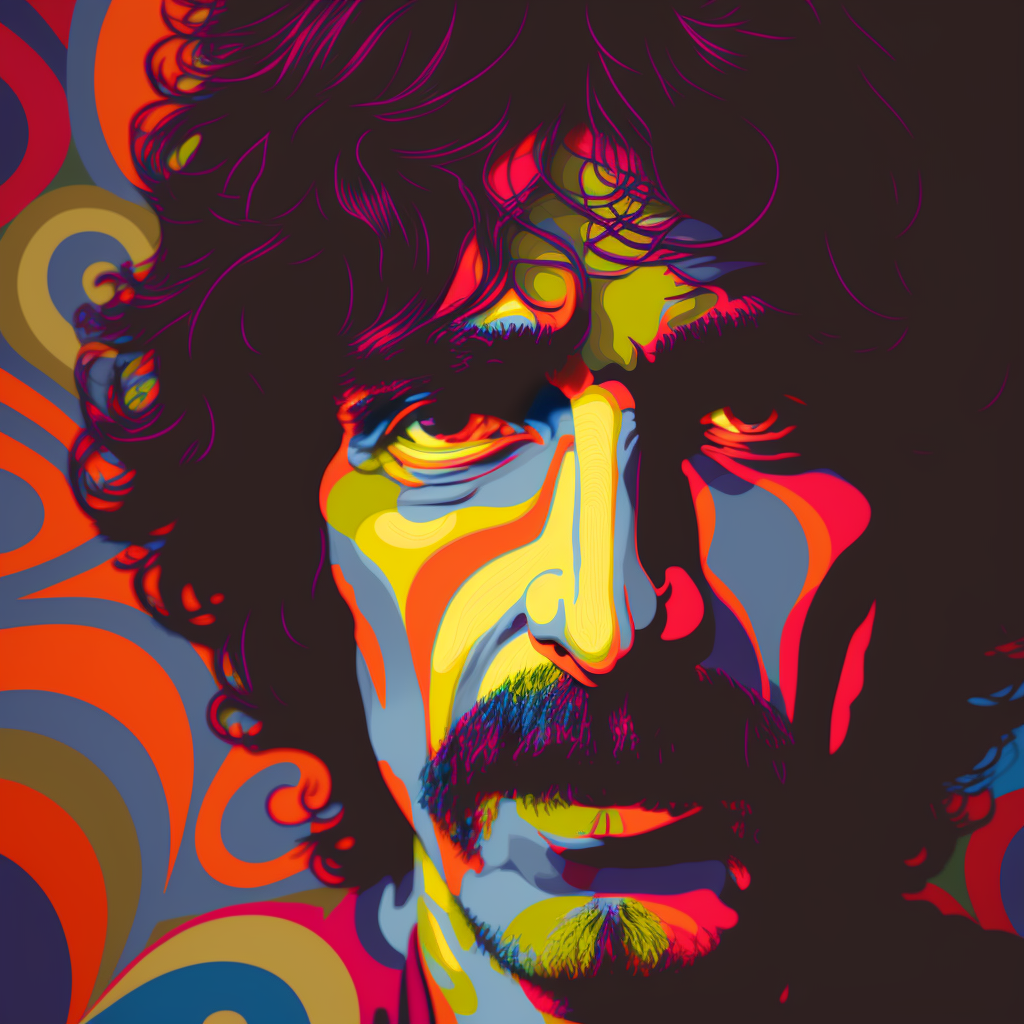
Closer Look At The American Mostly 60s Psychedelic Music
Let’s begin by taking a closer look at the 1960s, a time when music and philosophy were in perfect harmony, culminating in an explosion of new sonic dimensions. It was a time when musical revolutions from the previous 70 years came together, and with new innovations, ensured it would be the most innovative era of studio-based music to date.
One of the most significant innovations of this era was the use of electronic feedback as a musical compositional element. This technique was a spiritual successor to the noise of the Italian futurists and the exploration of musique concrète. The incorporation of Eastern musical influences into contemporary songwriting was another key development. In particular, music from the Indian subcontinent, such as the study and use of ragas, konokol, and other techniques from South Indian classical music, was popular.
Exploration outside the traditional blues rock framework was also a defining characteristic of psychedelic music. Musicians experimented with various modal and atonal forms of composition and songwriting, pushing the boundaries of what was possible.
Building on the space age pop studio innovations, artists used detailed tape splicing, backwards echo, and reverb-heavy overdubs, and recorded reverse tape to create a distinctive sound. Lyrics that codified the philosophical concepts from the lineage of the symbolists all the way up to the beatniks were also a hallmark of psychedelic music.
Listening to any of the more popular mainstream psychedelic records of the time, you would definitely hear these techniques in action. From the feedback-induced haze of Jimi Hendrix and Cream to the rootsy-esque jams of the Grateful Dead and Jefferson Airplane, to the weird noise experiments of Pink Floyd, each artist chose to interpret the ideals of this movement through his or her unique lens.
These artists pioneered the festival as a new form of live music entertainment, flaunted conservative sexual mores, and protested the Vietnam War. They made the psychedelic rock music scene what it was – an incredible time of innovation and change.
While there are countless amazing and world-changing albums from this era, I want to shift the focus and explore how psychedelia impacted other genres that don’t get as much attention. One such genre is psychedelic soul.
Psychedelic soul emerged as a fusion of soul and psychedelic rock music, incorporating the rhythmic and emotional elements of soul with the experimental sounds of psychedelic rock. This fusion of two genres resulted in a powerful new sound that captured the spirit of the times.
Artists such as Sly and the Family Stone, The Temptations, and Isaac Hayes embraced this genre and created timeless classics that continue to influence musicians to this day. These artists experimented with new sounds and techniques, creating music that was not only a reflection of the times but also pushed the boundaries of what was possible in music.
In conclusion, while the psychedelic rock scene of the 1960s is well known and talked about, it is important to recognize its impact on other genres such as psychedelic soul. This era was a time of incredible innovation and experimentation, and the legacy of these musicians continues to influence music today.
More Genres Evolving
“Psychedelic soul” is a unique genre that evolved in the 1960s. While rock music of the era was highly individualized, soul music had a more centralized top-down approach, with two big labels – Atlantic and Motown – controlling most of the market. As a result, the soul music industry was able to produce new hits at a pace no other genre could match. To put it in modern terms, think of it as the K-pop of the 60s and American.
However, the centralized approach also meant that label bosses often clashed with the artists on their roster, who were contemporaries of the hippie generation and wanted to participate in the changing musical aesthetic of the time. But label heads exerted unilateral control over musical style and visual aesthetics and were slow to change with the times.
The introduction and explosion of one group, however, changed everything. There can be no conversation about psychedelic soul without mentioning Sly and the Family Stone. Sly’s influence on numerous genres, artists, and movements cannot be overstated.
In fact, many artists we love today would not exist had Sly and the Family Stone not done what they did in the 1960s. Interestingly, Sly bucked the trend of label-directed soul artists as the Family Stone was formed in San Francisco autonomously and later signed to Epic, not Atlantic or Motown.
Sticking with soul music’s gospel-infused vocals and rhythms, Sly and co added layers of fuzz feedback and other studio production techniques to create the fundamental building blocks that came to characterize psychedelic soul, not to mention funk. With songs like “I Want to Take You Higher,” “Everyday People,” and “Hot Fun in the Summertime,” Sly took the soul music template and amped it up with all the psychedelic characteristics that were in vogue at the time.
Following this, the rest of the soul music industry began to take notice, with The Temptations ditching their earlier wholesome sound for songs like “Papa Was a Rollin’ Stone.” Psychedelic soul had a lasting impact on the music of the era and beyond, influencing funk, R&B, and even hip-hop.
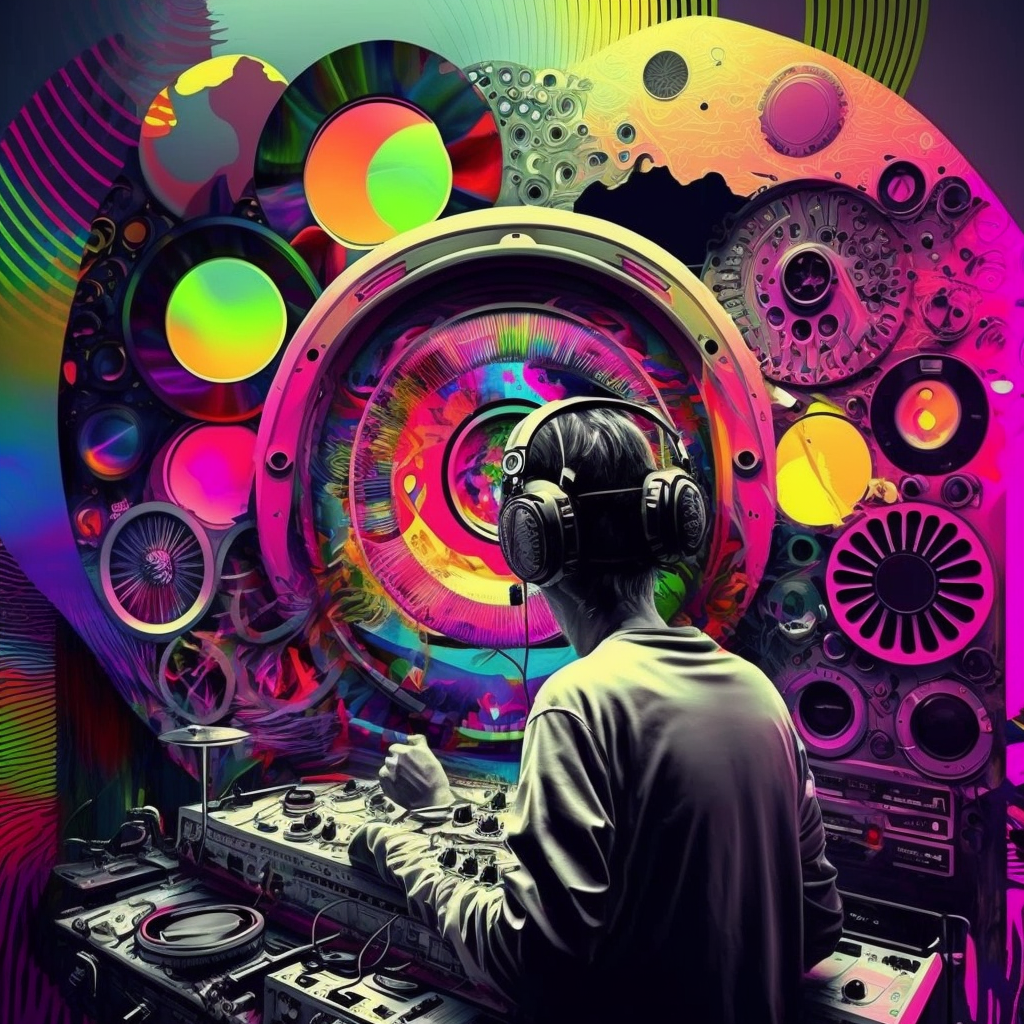
Psychedelic Soul Music Throughout The 60s
The evolution of psychedelic soul in the 60s was a unique phenomenon that is hard to pin down. Unlike rock music, which was highly individualized, soul music had a more centralized, top-down approach. This was due to the dominance of two labels, Atlantic and Motown, which controlled a lion’s share of the soul music market. As a result, the soul music apparatus was able to pump out new hits at a pace that no other genre could match. To put it into context, think of K-pop today, but in the 60s and American.
However, this centralized approach often put label bosses at odds with the artists on their roster. As contemporaries of the hippie generation, these artists were aware of the changing musical aesthetic that was taking place at the end of the decade and very much wanted to participate in it themselves. Label heads exerted unilateral control over musical style and visual aesthetics and, being of an older generation, were loathed to change quickly despite the changing times.
Then, the introduction and explosion of one group changed everything. There can be no conversation about psychedelic soul without mentioning Sly and the Family Stone. Sly had a singularity of influence over numerous genres, artists, and movements that people still underestimate to this day. In fact, many artists we love today would not exist if Sly and the Family Stone hadn’t done what they did in the 1960s. Interestingly, Sly actually bucked the trend of label-directed soul artists. The Family Stone was formed in San Francisco autonomously and later signed to Epic, not Atlantic or Motown.
With songs like “I Want to Take You Higher,” “Everyday People,” and “Hot Fun in the Summertime,” Sly took the soul music template and amped it up on all the psychedelic characteristics that were in vogue at the time. This birthed fundamental building blocks that came to characterize psychedelic soul, not to mention funk.
Speaking of funk, no psychedelic soul overview would be complete without mentioning Parliament and Funkadelic. P-Funk’s ability to combine the best of Hendrixian refuge and courting in the playing of Eddie Hazel with the gospel yelps and hollers of George Clinton laid the groundwork for the continuation and exploration of psychedelic soul in the 1970s. Funkadelic created a unique sonic landscape using psychedelic elements of the 60s and expanding them further by adding grittier subject matter and production techniques that ended up influencing everyone from Prince to the Red Hot Chili Peppers.
Psychedelic soul saw its biggest influence in the genre of Philly soul, emphasizing how in many ways everything really does go back to Debussy. Philly’s soul kept all the aforementioned innovations while reintroducing the full orchestral template back into the composition, songwriting, and recording process. Just taking a quick look at a track like “Didn’t I Blow Your Mind This Time” by The Delphonics, we can see all of this in full effect.
But what a lot of people don’t know is that another genre from the earlier 60s and 1950s underwent a massive transformation as the 60s came to a close, and that genre was folk music. Psychedelic folk was a unique phenomenon, and Donovan was by far the most mainstream of the psychedelic folk artists. With a series of number one hits on the Billboard Hot 100 chart, his songs like “Sunshine Superman,” “Season of the Witch,” and “Hurty Gertie Man” laid out in the most palatable ways the psychedelic folk template.
“Hurty Gertie Man” is particularly noteworthy, as strummed acoustic guitars open the song with a soft vocal, only to be interrupted by a jarring and prominent sitar. This is then followed by a double-tracked and heavier
Psychedelic Folk Music
The sound of psychedelic folk may have faded by the mid-70s, but its influence lived on in the music of bands like The Cure and artists like Robin Hitchcock. These three genres of psychedelic music found their way into the mainstream of popular culture in the late 60s and early 70s.
Psychedelic rock eventually gave way to a more back-to-roots hard rock sound from bands like Led Zeppelin, while psychedelic folk held on a bit longer before morphing into a more mainstream folk sound from artists like James Taylor, Carole King, and Jim Croce. Only psychedelic soul lasted into the mid-70s with artists like Funkadelic and The Delphonics, but even that morphed into something more palatable by the end of the decade in the form of disco music.
So, what happened to the musical template and aesthetic of psychedelia in the 1970s? The answer is fascinating. The 1970s were in many ways an inverse of the 1960s. While the 60s had ended in a colorful explosion of genre-mashing and collaboration, the 70s were highly segmented. Bands that had pioneered psychedelic rock ended up spawning descendants that became much more pared down and lean.
Think of the trippy acid rock of the Jimi Hendrix Experience versus the down-to-earth roots of a band like Aerosmith. As such, much of the previous three strains of psychedelia did indeed die out. However, the concepts and sounds pioneered in 60s psychedelia did find new homes in the space music artists of the 1970s.
Mainstream bands like Pink Floyd epitomized this sound, but the obscure underground that contained artists like Tangerine Dream, Vangelis, Jean-Michel Jarre, and Brian Eno among others were what defined the spaced-out music of the 1970s. While progressive rock was also developing a form of “out there” music at this time in the form of bands like Yes, Gentle Giant, and King Crimson, its emphasis on tight playing and technical acrobatics often put it in direct contrast with the expanding space music scene.
So, what were the characteristics of this genre? If we pull an example from Vangelis’s “Heaven and Hell,” we get a pretty good framework. The album contained giant, expansive tone paintings powered by the synthesizers of the day, with heavy classical influences. Jean-Michel Jarre, on the other hand, had less overt classical influence but placed more emphasis on the ambiance of the environment. And this is where Brian Eno comes in.
Eno’s work in the 1970s, particularly his “ambient” albums, emphasized the creation of a sonic environment that could be experienced passively, without the need for active attention. This created a soundscape that was both otherworldly and deeply immersive, making it the perfect soundtrack for introspection and contemplation.
Psychedelic Music Through Modern Times
The late 70s marked the birth of ambient music, single-handedly pioneered by Brian Eno. By combining the earlier influences of Eric Satie and the modern capabilities of the studio, Eno developed a style that could be both background and foreground music, depending on the listener’s desires. While some may argue about whether ambient music falls under the psychedelic genre, its mind-expanding and heady aspects certainly qualify. Harold Budd, Daniel Lenoir, and later artists like Oval and Aphex Twin all furthered psychedelia using ambient music to stimulate the inner dimensions of the mind.
However, in the 1980s, psychedelic music faced an uphill battle. With the rise of Reagan’s social conservatism and supply-side economics, it appeared that the decade would not be hospitable to the values pioneered in the psychedelic music of the ’60s. The Paisley Underground, featuring bands like Dream Syndicate and the Bangles, attempted to revive some of the sounds of the late ’60s and did find some commercial success, but the real sound of psychedelia in the ’80s and early ’90s was that of acid house.
The transition to acid house brought significant changes to how psychedelic music was produced and perceived in the waning days of the 20th century. Primarily, psychedelic music became an acoustic form of music due to the way in which acid house was produced. While the ambient and space music artists of the ’70s had mostly abandoned guitars as the primary instrument for creating expansive soundscapes, they had still kept real-time playing with the use of synthesizers intact. However, acid house fully removed this real-time element by using the Roland TB-303 and TR-808 as primary tools of composition.
The sound of acid house was as hypnotic as any of the best Brian Eno ambient records, except on a totally different frequency. The much higher beats per minute (BPM) indebted the style to disco, which itself had descended from psychedelic soul. Despite the challenges, acid house allowed psychedelic music to continue to evolve, and its influence can still be heard in genres like techno and EDM today.
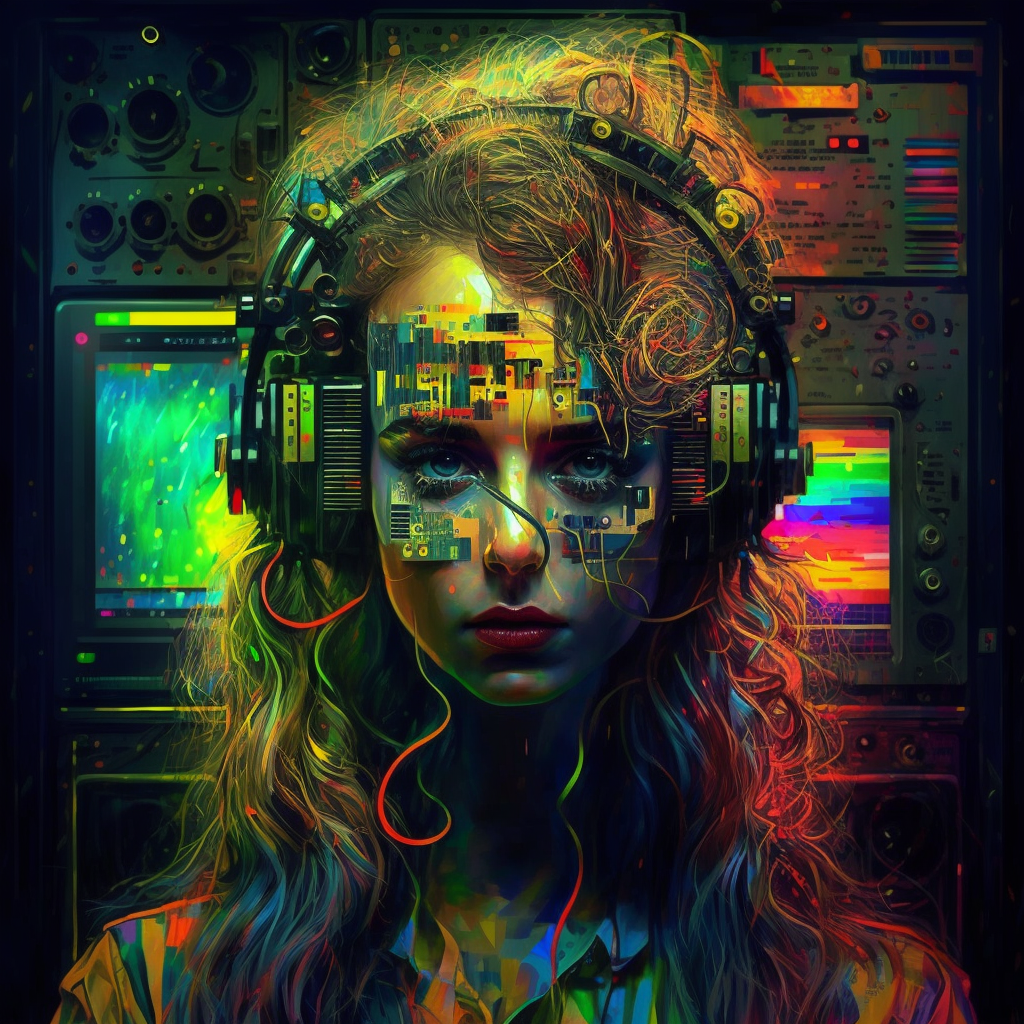
Modern Acid Techno / Acid House As Part Of The Growth Psychedelic Music As A Whole
The emergence of acid house in the late 80s was a radical departure from the conformist attitudes of western culture in the 1980s. The heavy use of reverb and phasing, inspired by experimental artists like Vangelis and Jean-Michel Jarre, combined with the values of free love, anti-establishment sentiment, and the introduction of ecstasy, gave rise to a new form of psychedelia that dominated the underground scene. Although acid house never achieved mainstream success, it laid the foundation for the electronic music that would evolve throughout the 90s, taking even more twisting and strange turns.
As the 90s progressed, psychedelic music experienced a revival with a distinct indie or alternative take. Bands like Jellyfish, The Screaming Trees, and The Flaming Lips brought back the space celestial music of the 60s and 70s, while shoegaze pioneers like My Bloody Valentine and Slowdive ushered in a spaced-out inward experience, shifting away from electronics to guitars as the primary sound generator.
Despite the many innovations across genres in the 90s, psychedelic music did not see as many clearly defined movements. Ambient music continued to evolve in strange ways, and shoegaze continued to innovate and expand the boundaries of guitar-based music. The decade also saw a move towards a more raw and earthy approach to music-making.
However, the 90s also saw significant technological advancements that opened up new possibilities in psychedelic music. The rise of digital recording over analog led to a fusion of multiple approaches to psychedelia in the 2000s, including cosmetic non-acoustimatic guitar-based, synthesizer-based, and sample-based psychedelia. Animal Collective became the definitive psychedelic band of the 2000s with their kaleidoscopic sound, invoking the best of psychedelia’s past, present, and future. Their albums, such as “Strawberry Jam” and “Merriweather Post Pavilion,” showcased heavy, thick synthesizers, and digital manipulation of vocals, melding a variety of elements into a bright and captivating melange.
Last Words And Bright Future
When it comes to music, I believe that there’s nothing quite like psychedelia. The way it blends different sounds and textures to create a surreal, otherworldly experience is simply breathtaking. And while psychedelia has been around for over a century, it continues to inspire and influence musicians to this day.
One artist who embodies this spirit of experimentation is John Hopkins. His unique blend of acid house and ambient music is both haunting and beautiful, with every note transporting you to a different dimension. I love how he incorporates psychedelics and their culture into his music-making process, creating a sound that is truly mind-expanding.
But Hopkins is not the only one. Artists like Frank Ocean and Jay Paul are also part of the grand story of psychedelia, infusing their modern R&B productions with a spaced-out electronic element that creates a celestial soundscape that’s simply out of this world.
And of course, we cannot talk about psychedelia in the 21st century without mentioning Tame Impala. Their classic album “Currents” is the definitive form of modern psychedelia, with its digital manipulation, heavy guitars, and vocal treatments that open up new paths for spaced-out music.
But psychedelia isn’t just limited to one genre. Acts like King Gizzard and the Lizard Wizard and newer alt-R&B and electronic artists are also incorporating psychedelic elements into their music, proving that the genre ideology and mindset still have a lot of life left in them.
All in all, the future of psychedelia promises to be mighty trippy, and I can’t wait to see where it takes us next. So go ahead, chill under a tree, and listen to everyone from WC to Kevin Parker. You won’t regret it. Cheers!
Categorised in: Psychedelic

